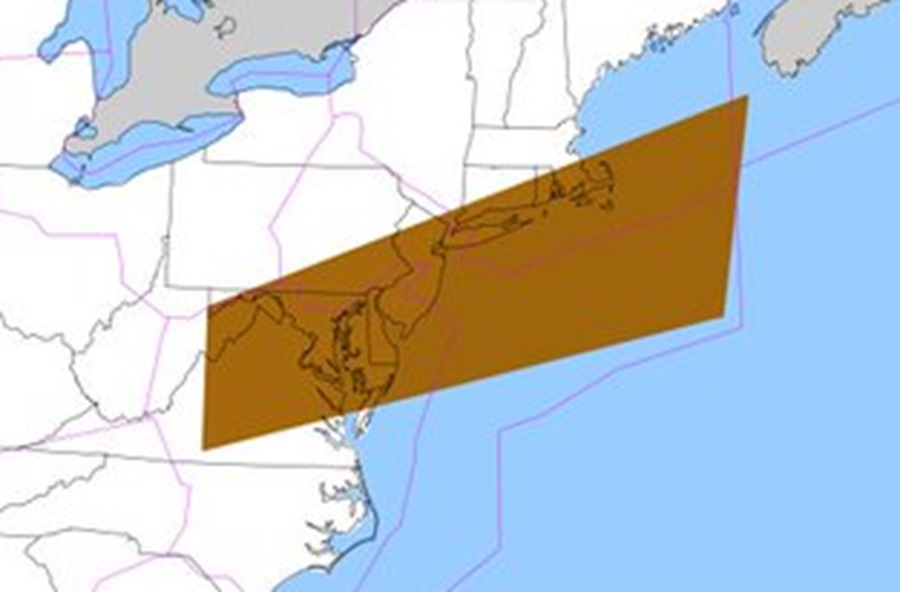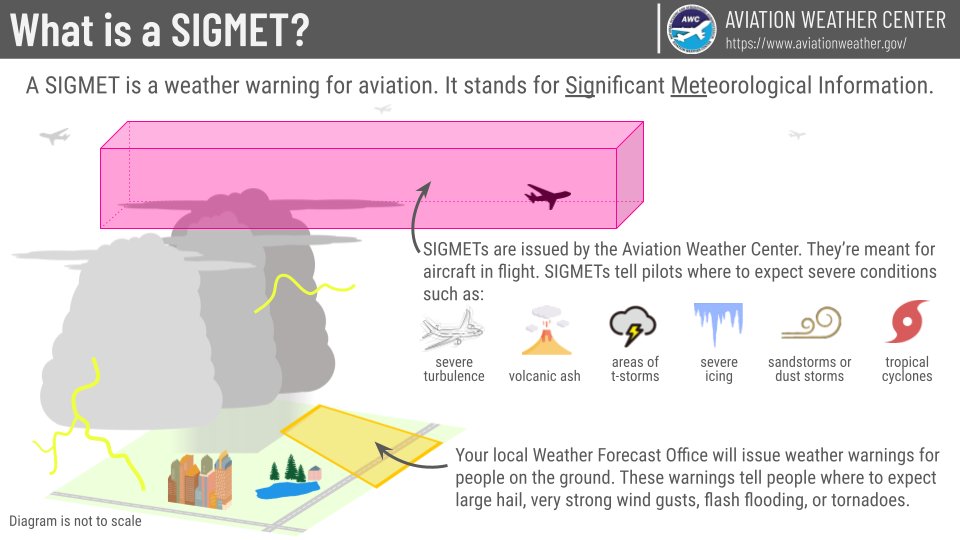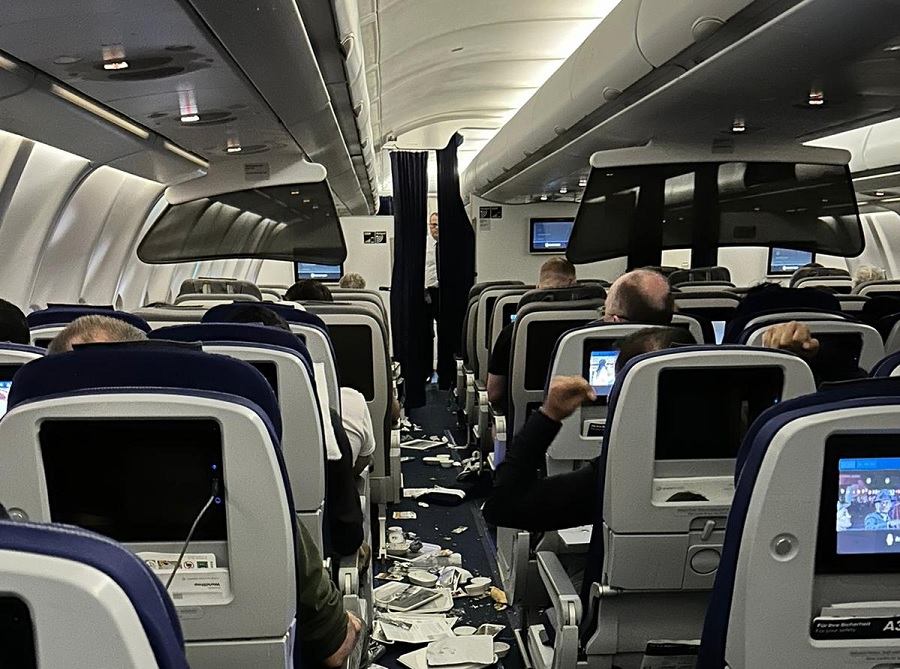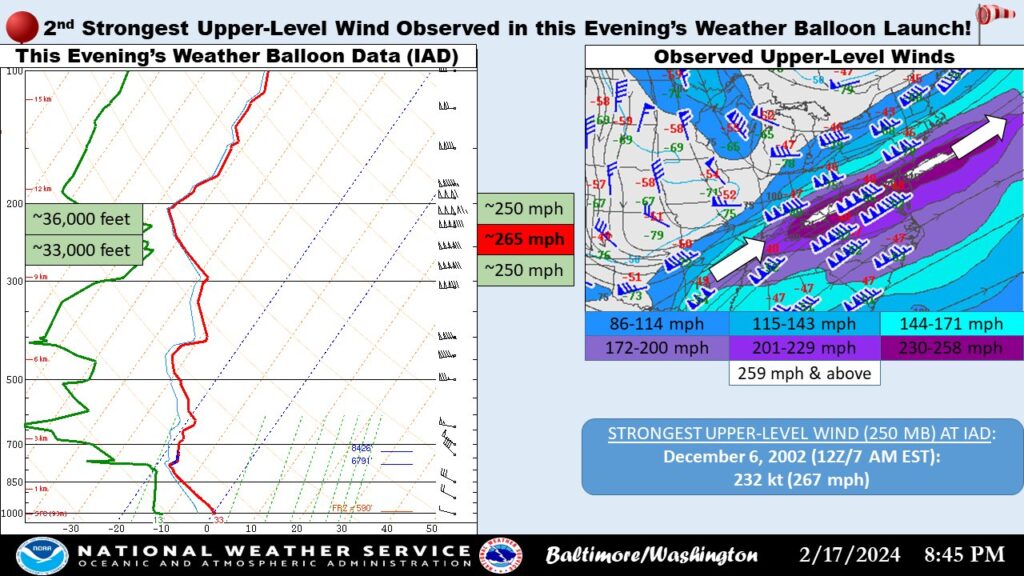
The National Weather Service’s Aviation Weather Center (AWC) has issued a Severe Turbulence alert for air travelers over the northeastern U.S.; specifically, parts of New Jersey, New York, Delaware, Maryland, West Virginia, Virginia, Connecticut, Rhode Island, and Massachusetts are covered by the advisory. Included in this alert is the airspace over all New York area airports including Newark Liberty (EWR), John F. Kennedy Airport (JFK), and LaGuardia (LGA), Philadelphia’s International Airport (PHL), and all the airports around Washington, DC including Washington-Dulles (IAD), Washington-National (DCA), and Thurgood Marshall Airport (BWI.)
Specifically, SIGMET QUEBEC 1 has been issued through at least 1802 UTC today.
According to the AWC, there is occasional severe turbulence between 30,000 feet and 40,000 feet, the typical cruising altitude of most commercial aircraft. This turbulence is being created by wind shear associated with the jet stream.
Wind shear is a difference in wind speed and/or direction over a very short distance in the atmosphere. Airline pilots generally regard significant wind shear to be a horizontal change in airspeed of 30 knots (15 m/s or 34 mph) for light aircraft and 45 knots (23 m/s or 51 mph) for traditional airliners flying at flight altitude.

Flying through turbulence can be very dangerous. Over the last 2 years, there have been numerous reports of injuries and death to passengers and crew that have experienced severe turbulence over U.S. airspace.
Last year, a Lufthansa flight took off from Austin, Texas and encountered severe turbulence over Tennessee at 37,000 feet. The plane had to divert to Washington, DC so that passengers and crew could get the hospitalization they needed.
Roughly 90 minutes into the flight while flight attendants were in the aisle serving food and drinks, the aircraft, an Airbus A330-300 dropped twice within about 20 seconds, plunging the plane down but sending passengers and crew that weren’t secured in their seats up in the air. One flight attendant was launched into the interior ceiling of the aircraft and punctured it, before they collapsed onto the aircraft floor. Injured passengers and crew were treated upon landing, with 7 ultimately requiring additional care in nearby hospitals.
Among the rattled passengers on board were actor Matthew McConaughey and his wife Camila. Camila McConaughey wrote on Instagram, “On Flight last night, I was told plane dropped almost 4,000 feet, 7 people went to the hospital, Everything was flying everywhere.”

There’s been a rash of severe turbulence events in recent months that have sent many passengers to the hospital.
A Newark-Tampa flight operated by United Airlines months ago also encountered severe turbulence. When flight 600 finally landed in Tampa, it was met by paramedics that treated passengers and crew at the scene. Ultimately, 1 flight attendant and 2 passengers needed hospitalization after being examined at the airport for injuries sustained during the rough flight.
Last winter, a United Airlines 767 jet encountered severe turbulence on its flight to Houston, Texas. Due to that encounter with rough air, 3 crew members and 2 passengers had to be rushed to the hospital for care upon landing.

The day before the Houston incident earlier that winter, Hawaiian Airlines Flight 35 flew through severe turbulence before landing at Honolulu International Airport after originating in Phoenix, Arizona. A Mass Casualty Emergency Event was declared, with dozens of passengers needing care for injuries sustained in the violent ride. Officials with Honolulu Emergency Medical Services and American Medical Response say the flight encountered the extreme turbulence about 30 minutes prior to landing; they treated 36 patients at the airport. 20 patients, ranging from a 14-month old toddler to older adults, were transported to hospitals near the airport, some with serious injuries.
According to a 2021 report from the NTSB, turbulence accounted for more than 37% of all accidents on larger commercial airlines between 2009 and 2018. The FAA also released data last year that reported on 146 serious injuries related to severe turbulence from 2009 to 2021.

According to the National Weather Service office for the Baltimore-Washington metro area, a weather balloon launch last night detected the second strongest upper-level wind recorded in local history going back to the mid 20th century. According to that remote observation, at around 34,000-35,000 feet, winds peaked at 265 mph.